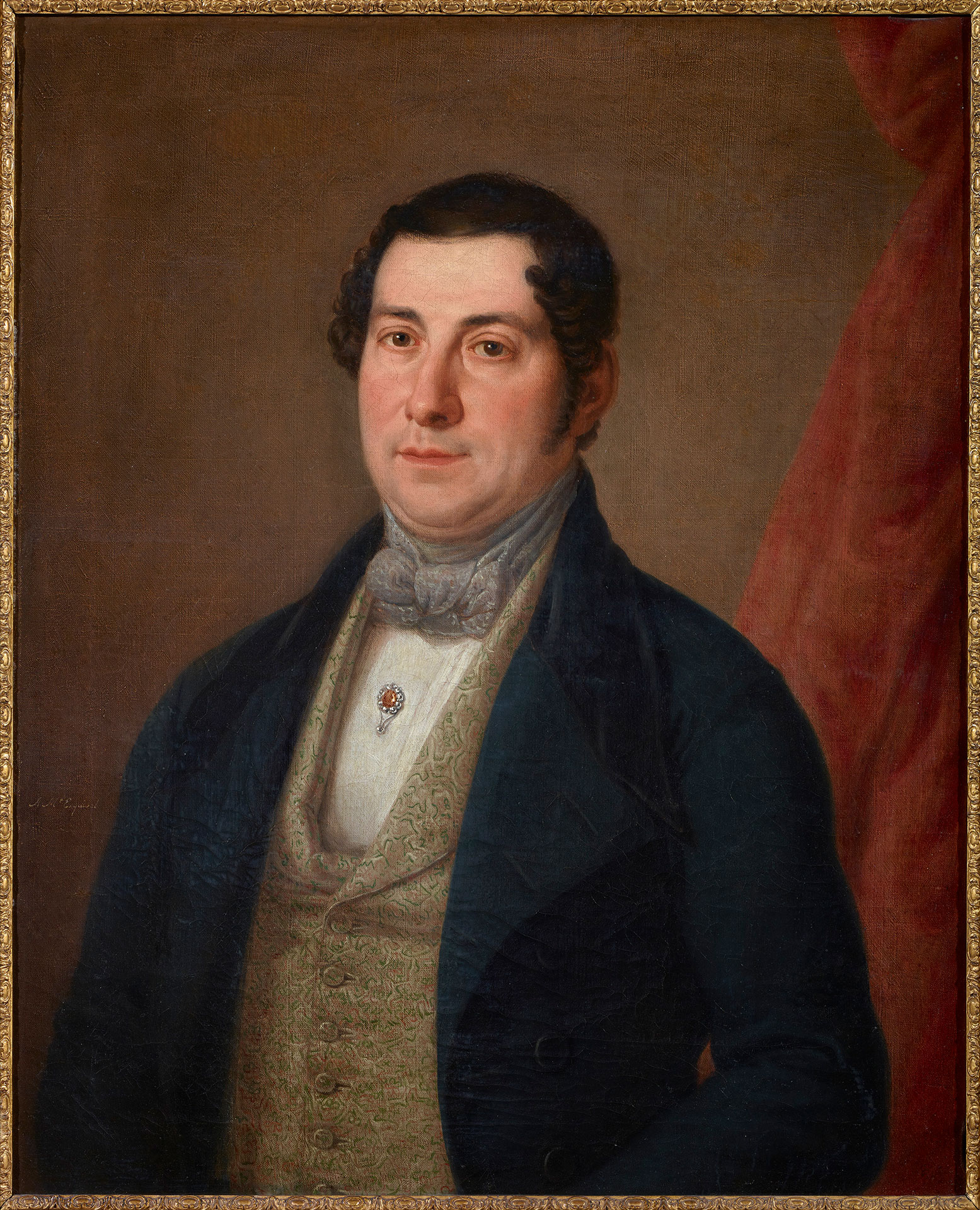
Antonio María Esquivel (Seville, 1806 – Madrid, 1857)
Portrait of a Gentleman
1831-1838
WORK INFORMATION
Oil on canvas, 72.5 x 59 cm
OTHER INFORMATION
Signed at the bottom left: "A. M. Esquivel"
Trained at the Academy of Fine Arts in Seville, the city where he began his artistic career, Antonio María Esquivel moved to Madrid in 1831 with the assistance of Julian Benjamin Williams, a British diplomat and collector. In the capital he attended classes at the Academy of Fine Arts of San Fernando, where he later became a teacher and fellow, and actively participated in the leading cultural circles of Romantic Madrid, portraying many of its most prominent figures in one of his best-known paintings, Contemporary Poets: A Reading by Zorilla in the Painter's Studio (1846, Museo del Prado). In 1837 he helped to found the Artistic and Literary Lyceum, whose members generously supported him during the two years of blindness he suffered due to illness in 1838. After recovering his sight, Esquivel resumed his career and went on to paint most of the works that would enshrine him as one of the great names of 19th-century Spanish painting. Until his untimely death, he enjoyed the favour and esteem of the royal family and some of the leading personalities of his day, including Dean Manuel López Cepero.
Esquivel's notable efforts as a theorist and polemicist also led him to participate in some of the principal artistic debates in the capital during the mid-19th century, becoming a champion of national tradition, in consonance with his own work. As a result of his teaching activity, he published a treatise on pictorial anatomy for the education of young artists.
Although he painted brilliant compositions, mostly on religious and mythological themes, Esquivel's fame and fortune was largely owing to his skill in portraiture. In this genre, which also allowed him to demonstrate his talent as a miniaturist, he proved to be particularly prolific. We see this in the different typologies, some derived from English tradition, with which he strove to cater for patrons in Isabelline society, and which constituted novel contributions to the Spanish art world.
To satisfy the demand of the prosperous bourgeoisie and make ends meet in the difficult early days of his career, during his first years in Madrid the artist produced a considerable number of portraits in a style intended strictly for the private sphere, of which this Portrait of a Gentleman is a good example. In these small-format works, usually long bust-length portraits, the sitter is treated with intimate familiarity and an intensely formal sobriety, in this case attenuated by the decorative pattern of the meticulously described waistcoat and the red curtain falling from the right over the characteristic neutral ground. Even so, the eye is immediately drawn to the sitter's face and expressive, friendly gaze, rendered with an honesty and faithfulness that bears little resemblance to the idealised features of the stately portraits which Esquivel frequently painted after 1840. [Pedro J. Martínez Plaza]

